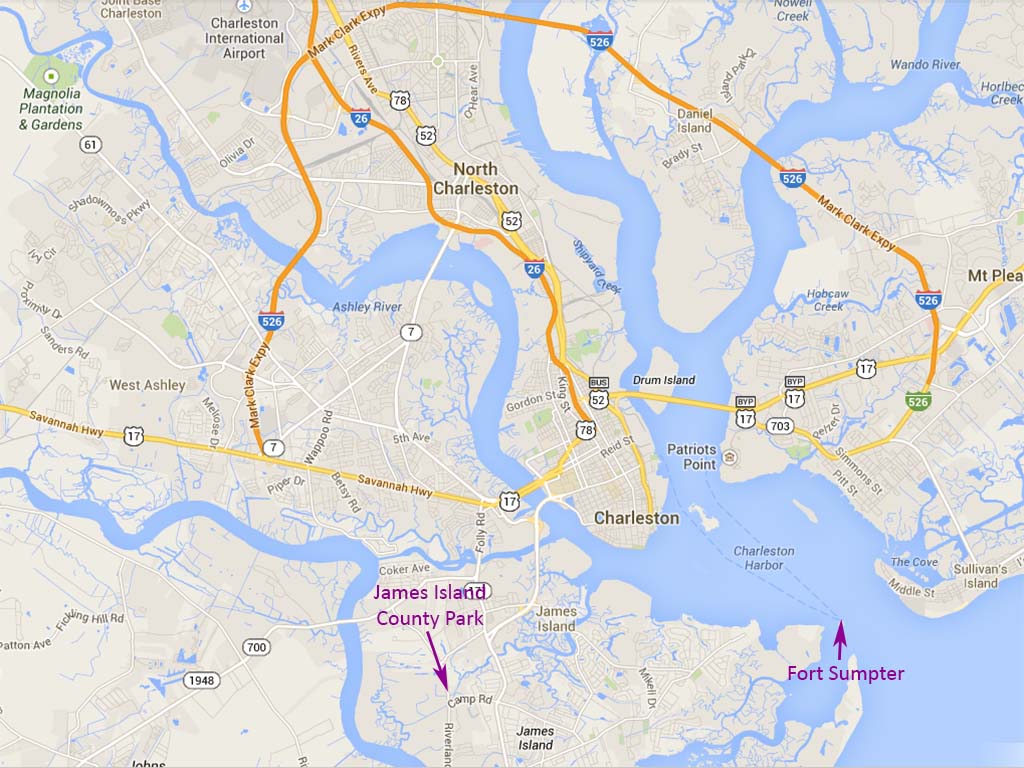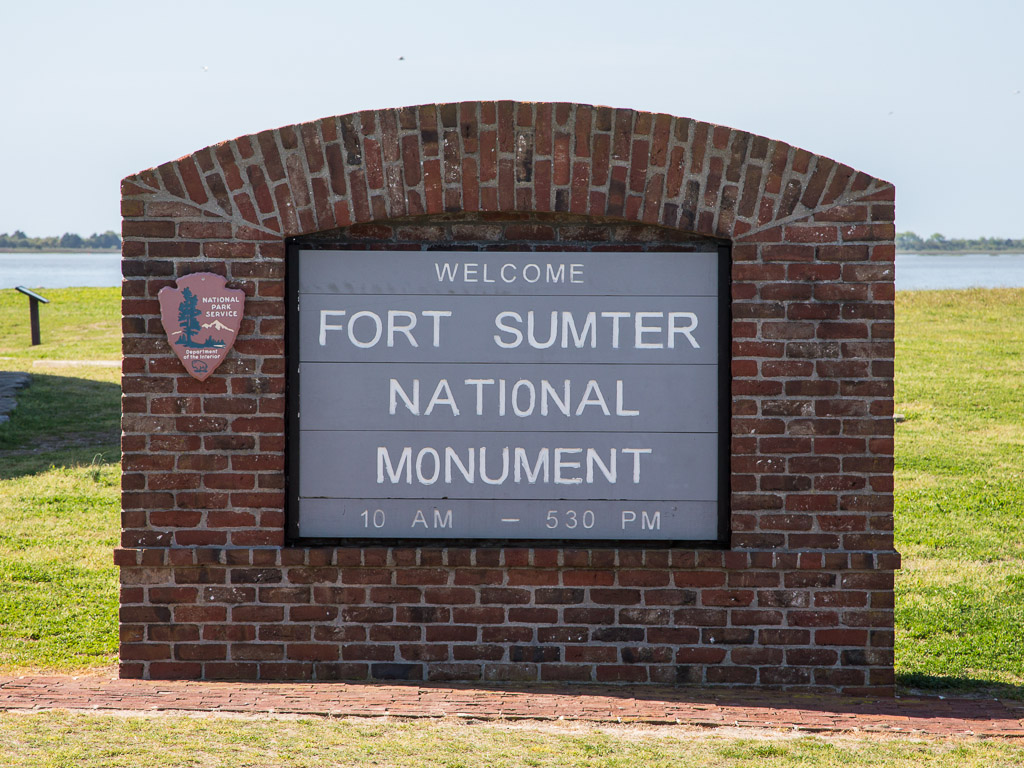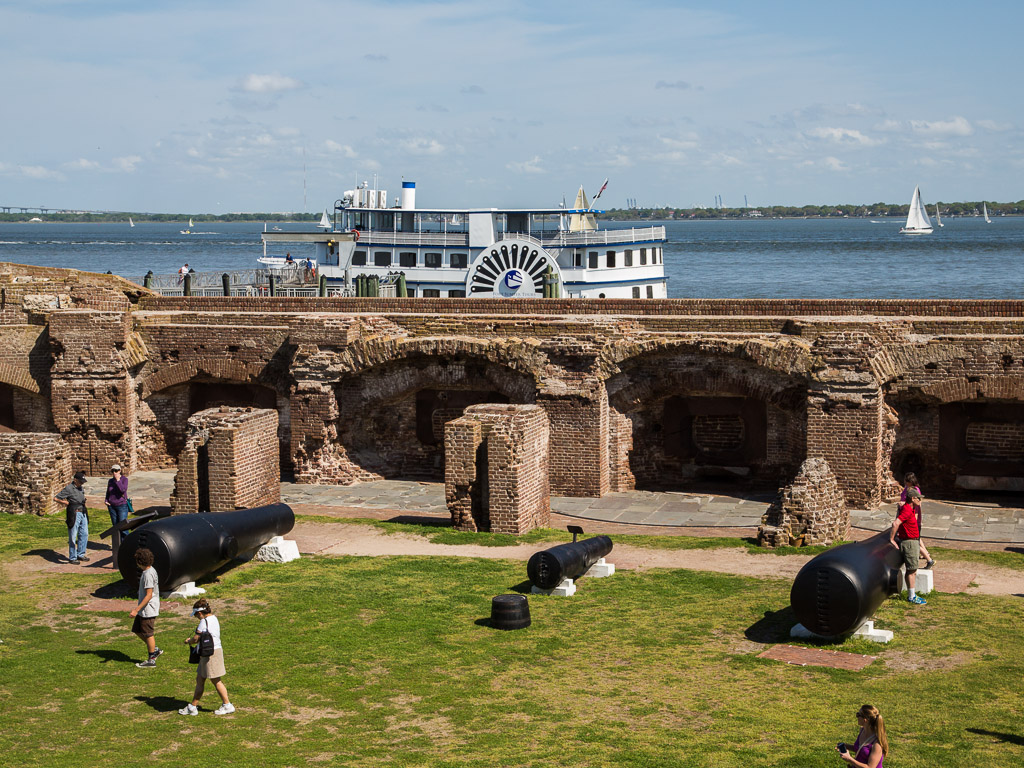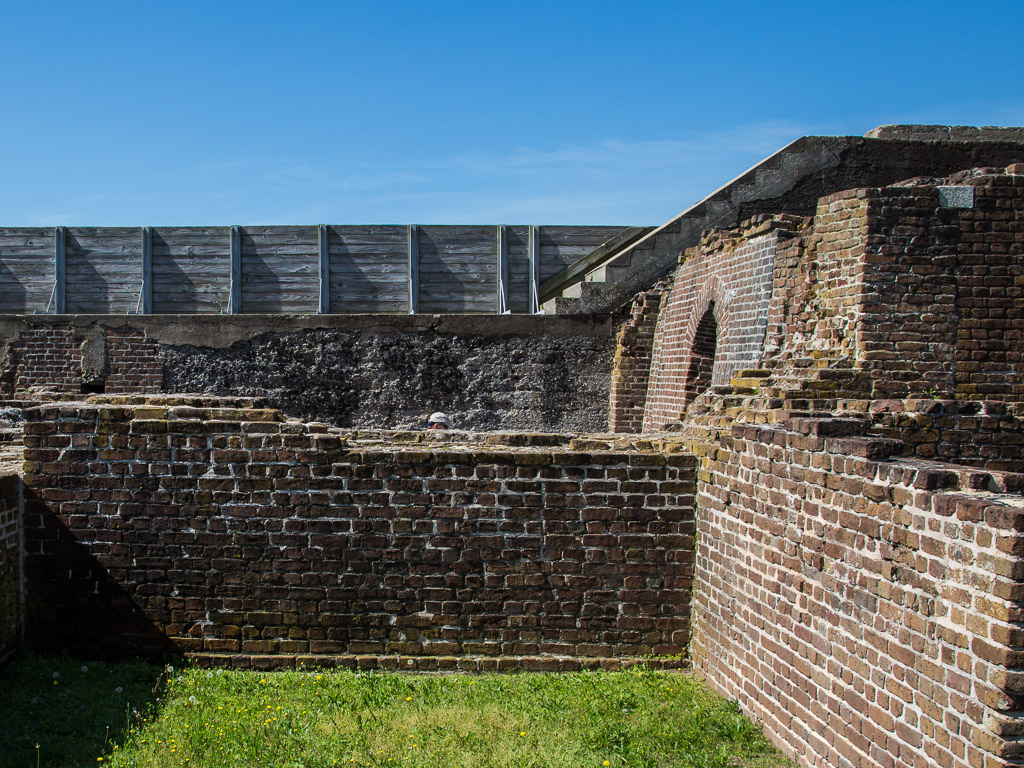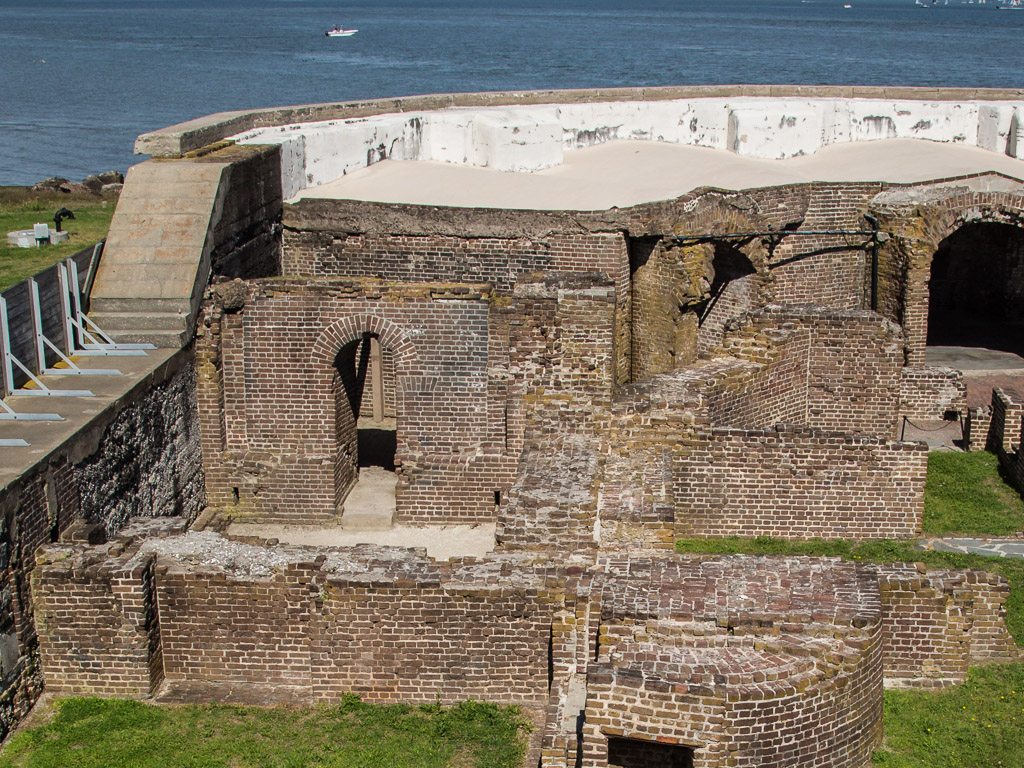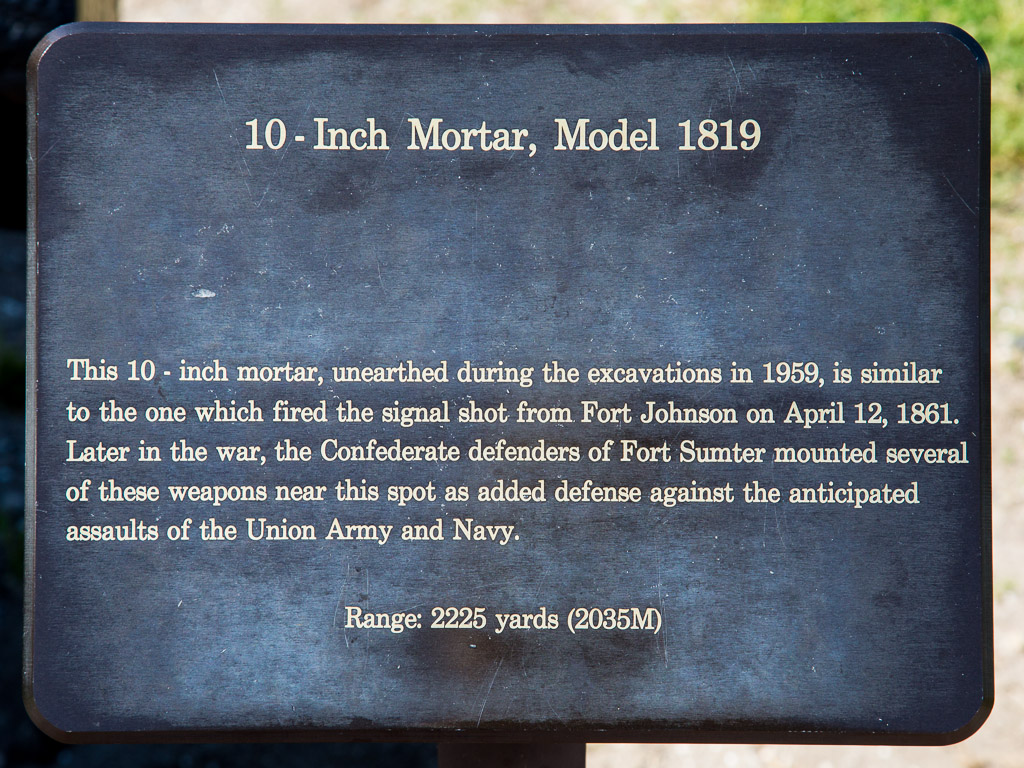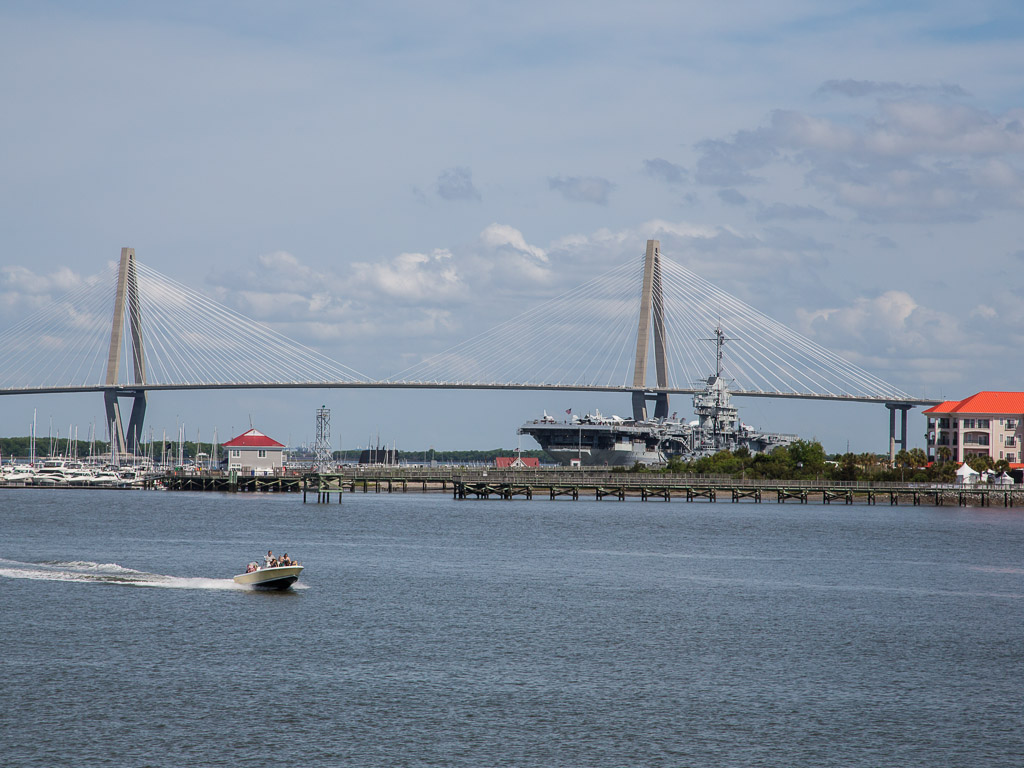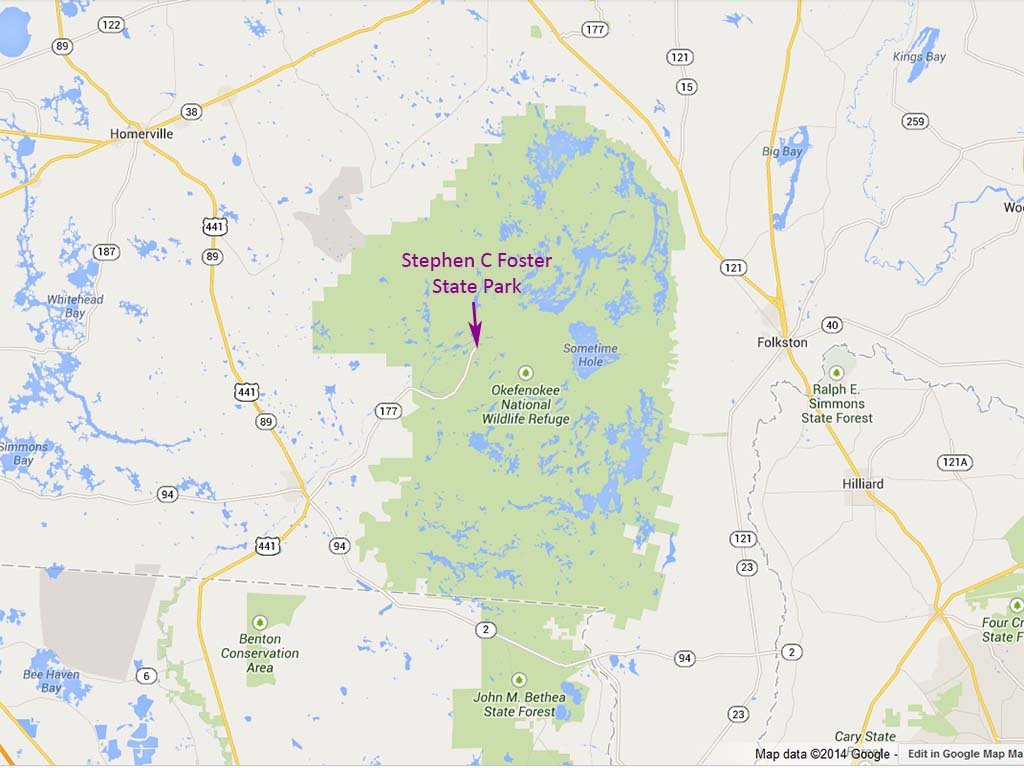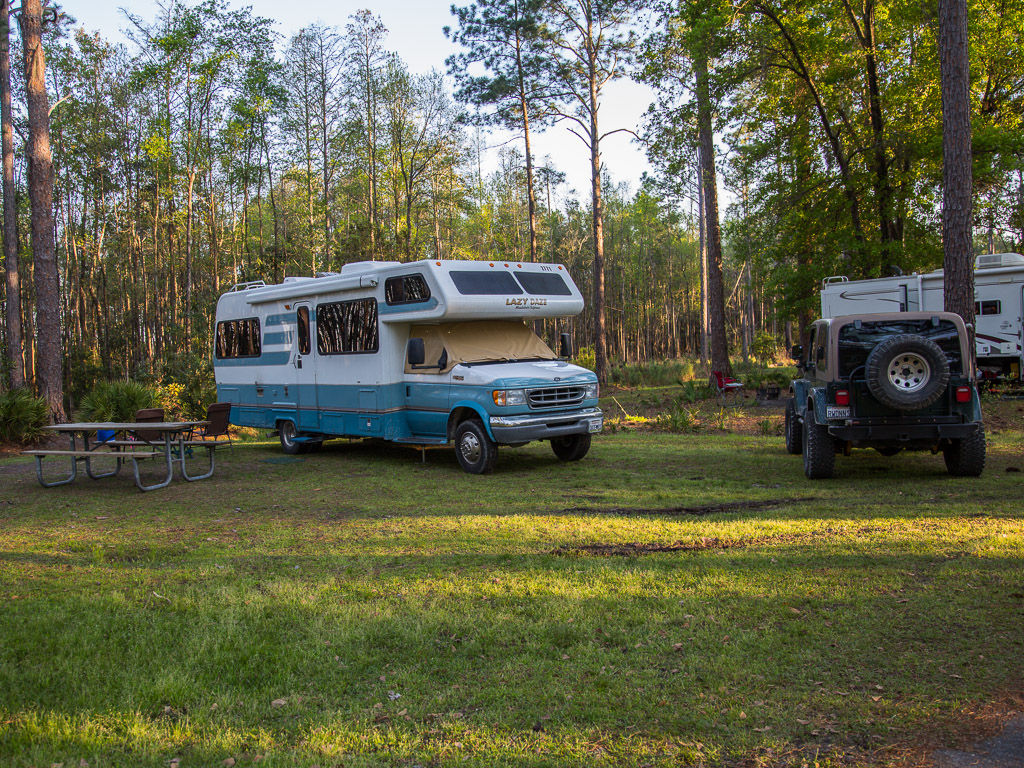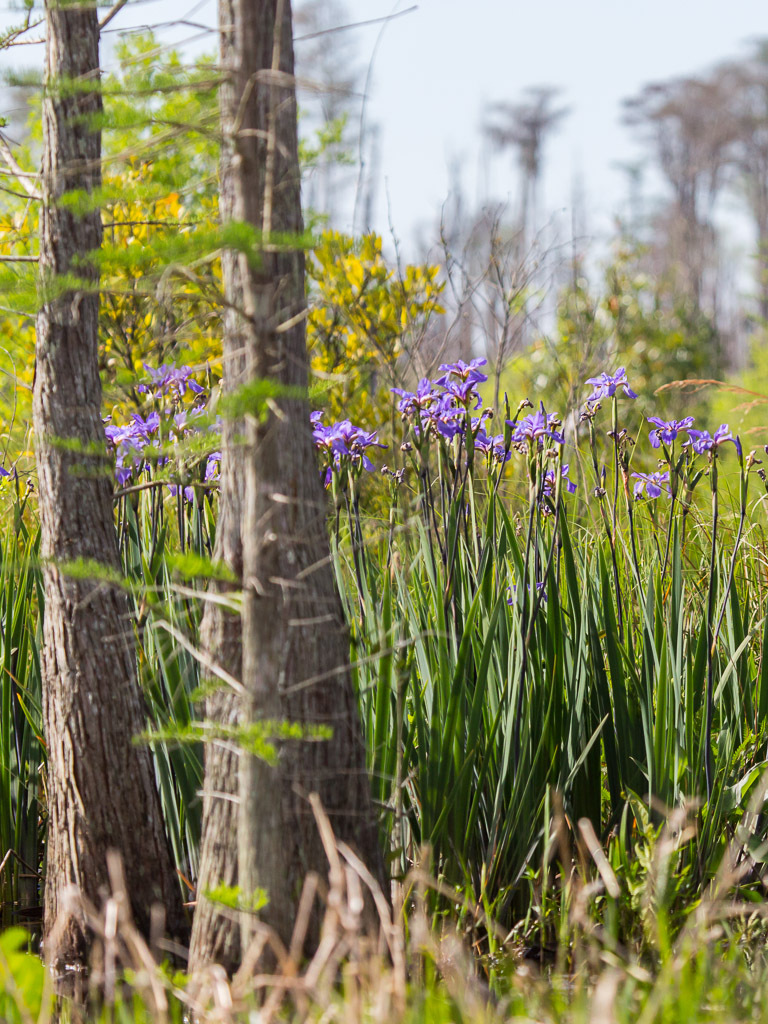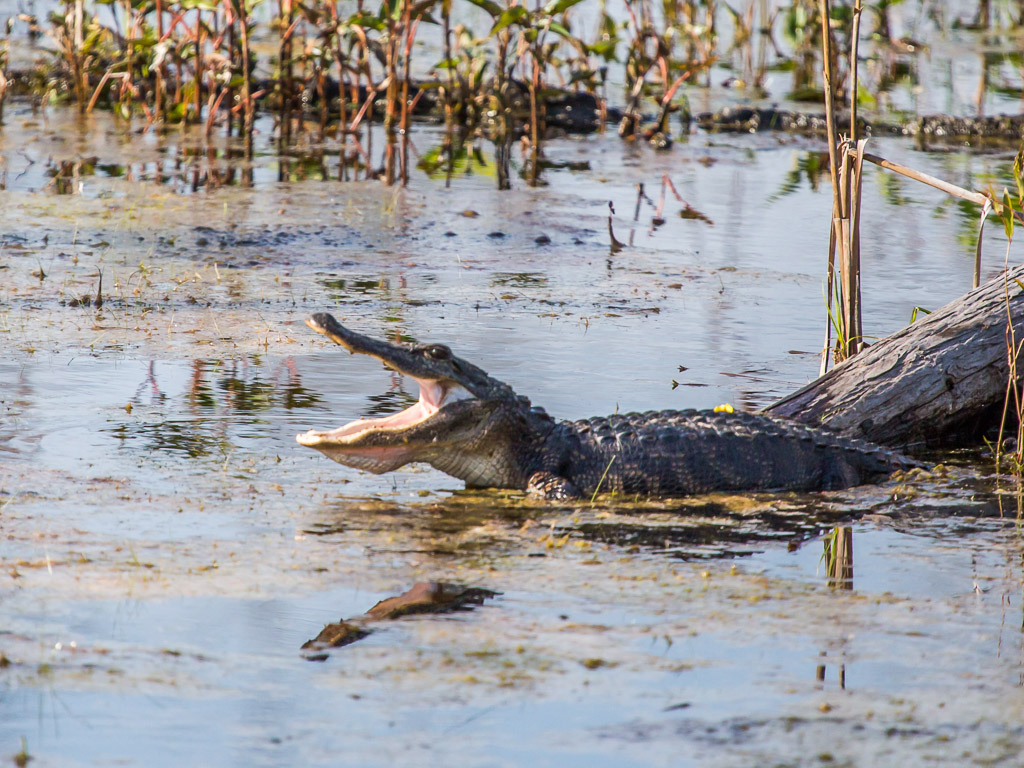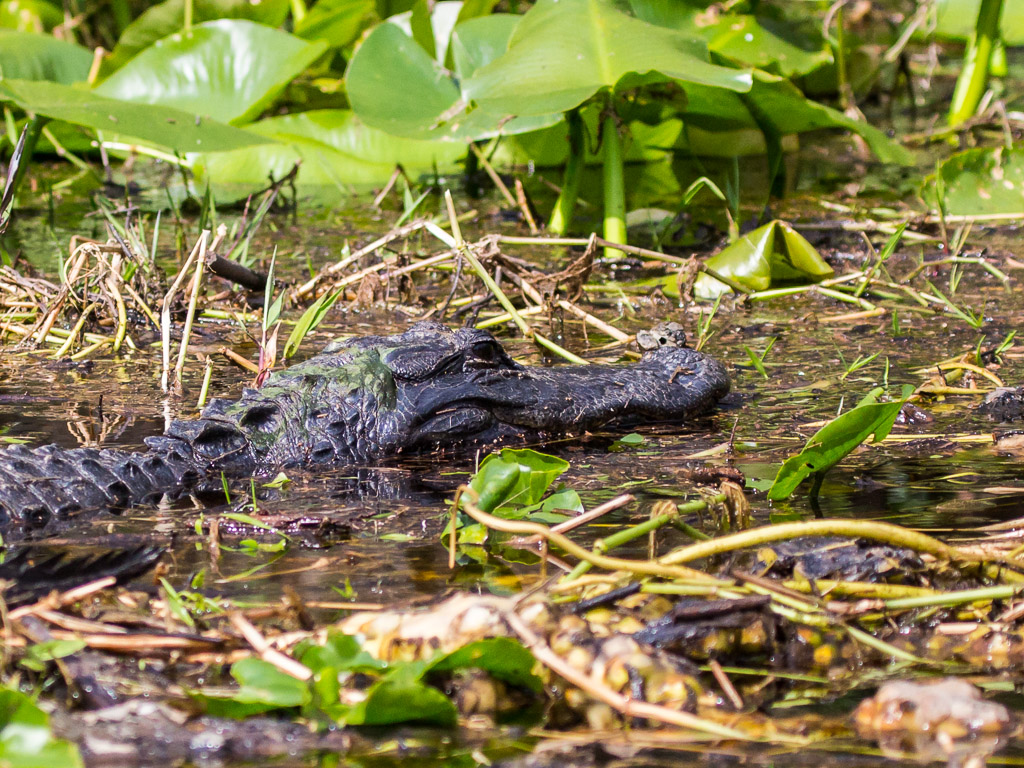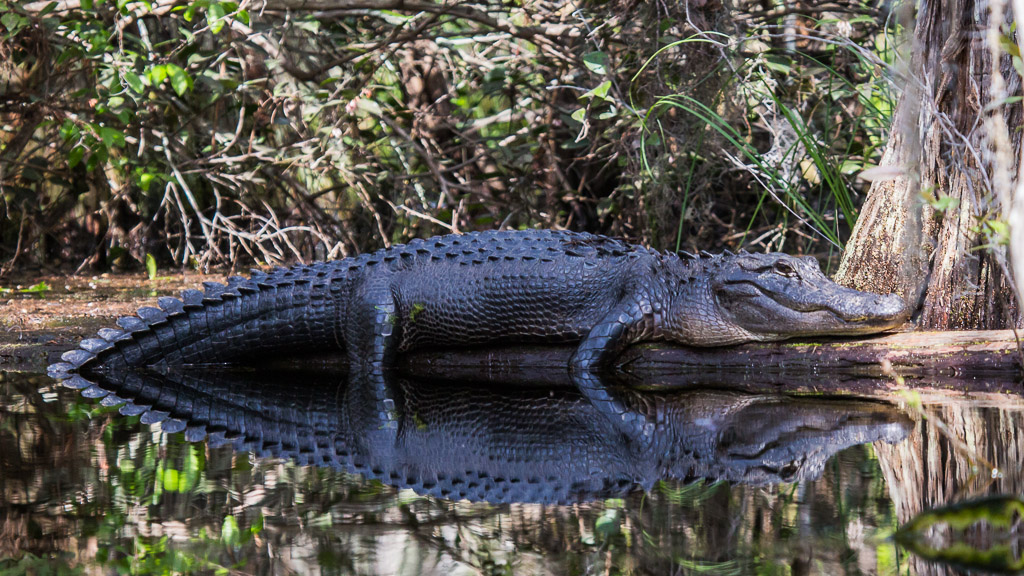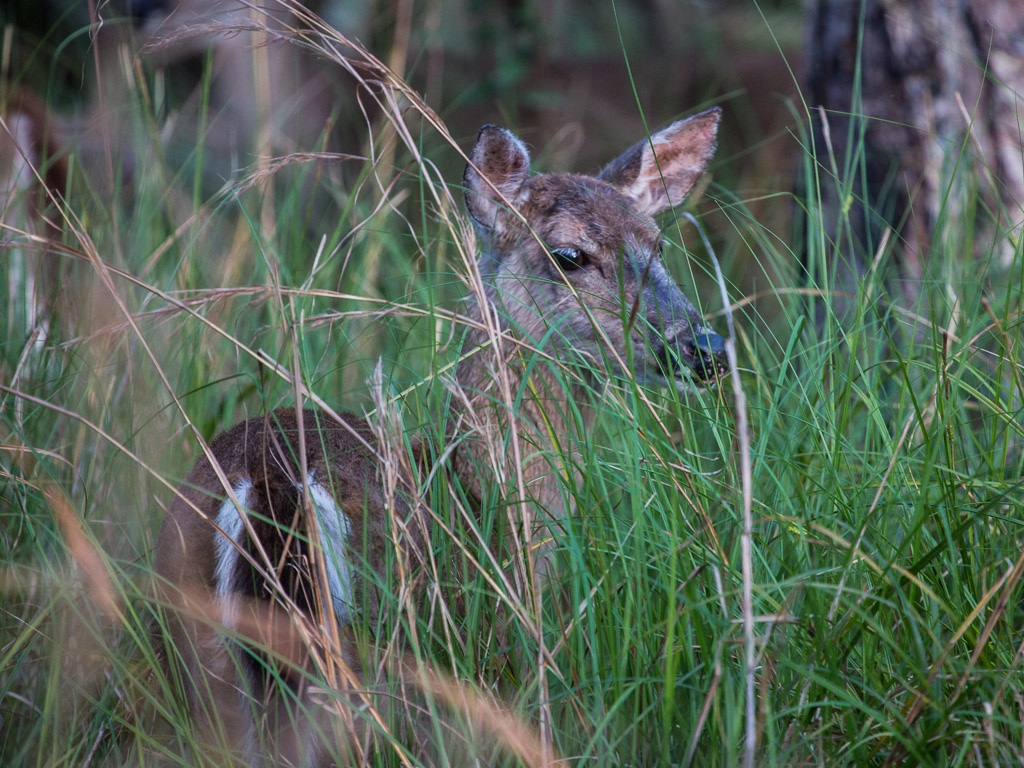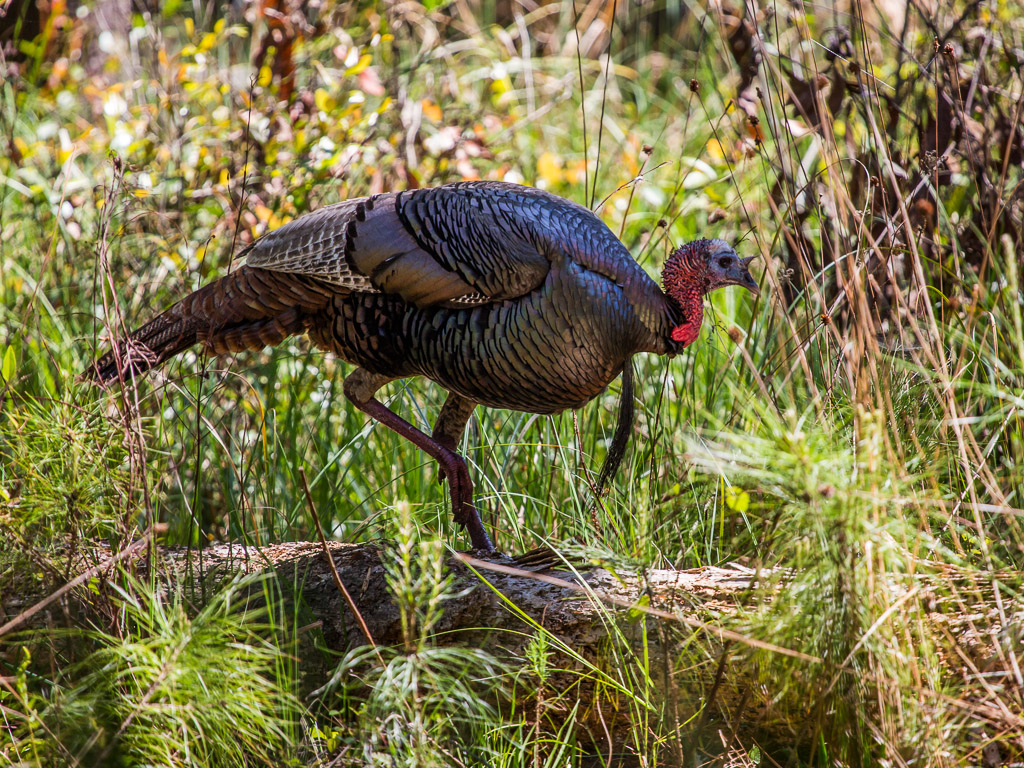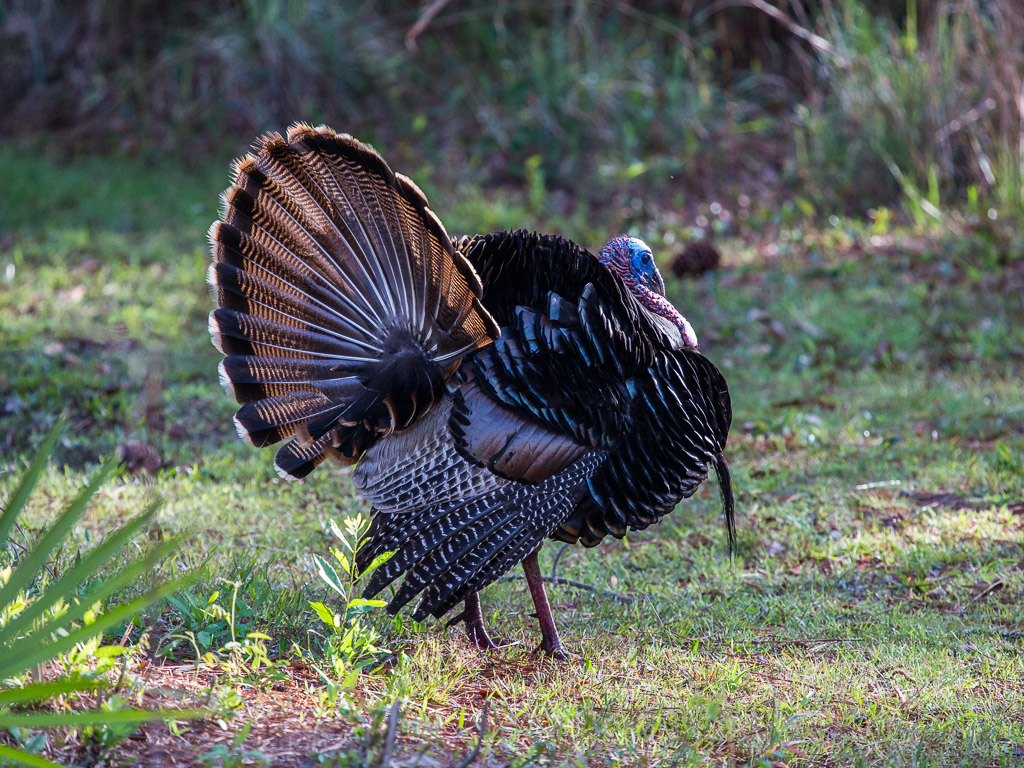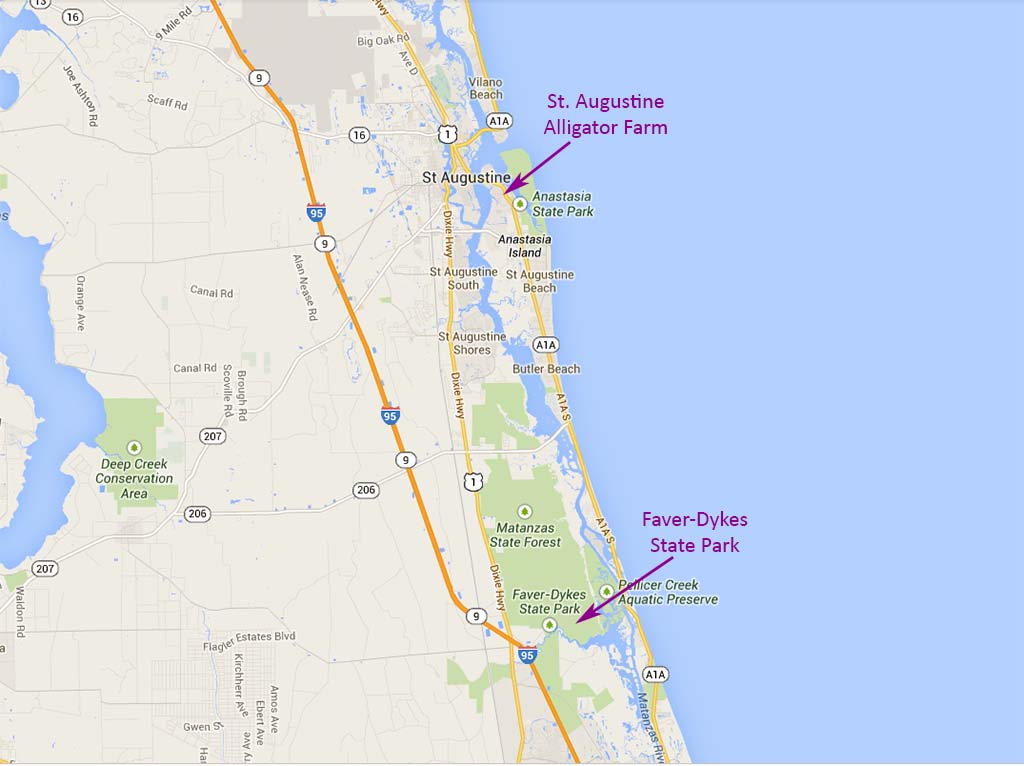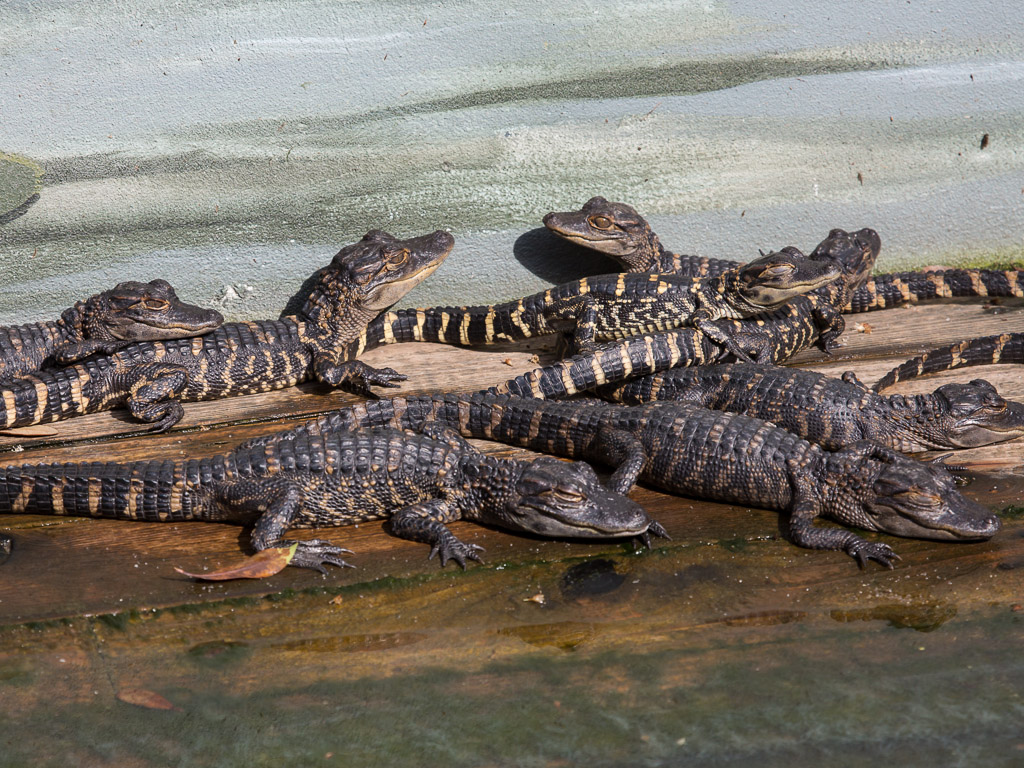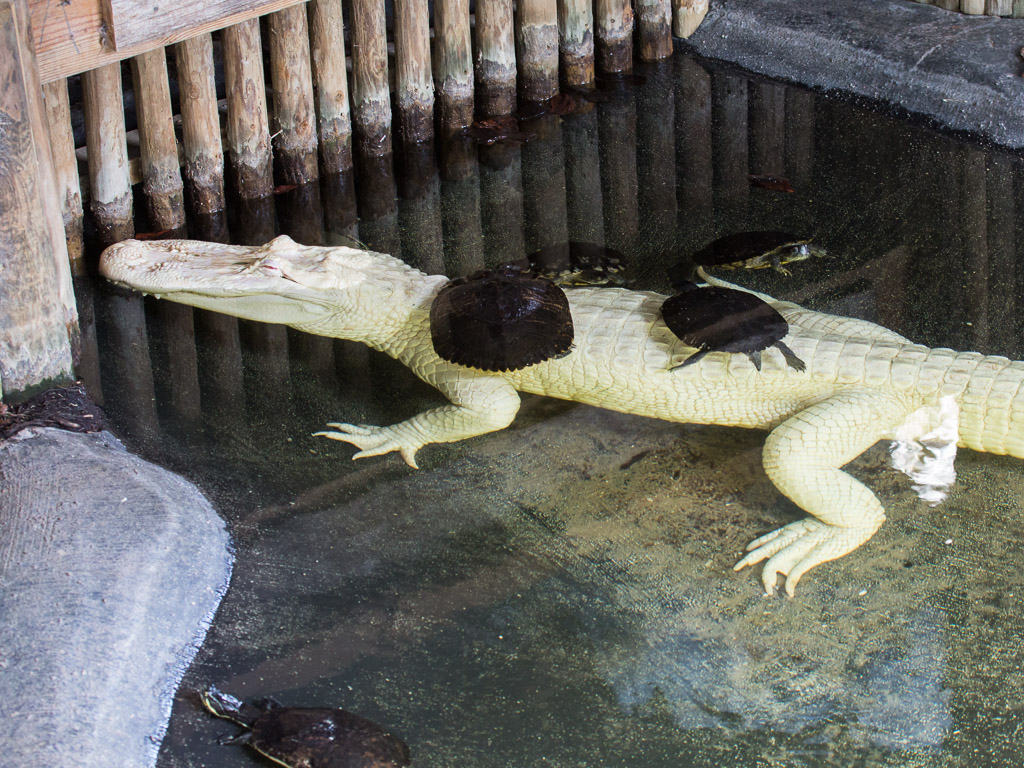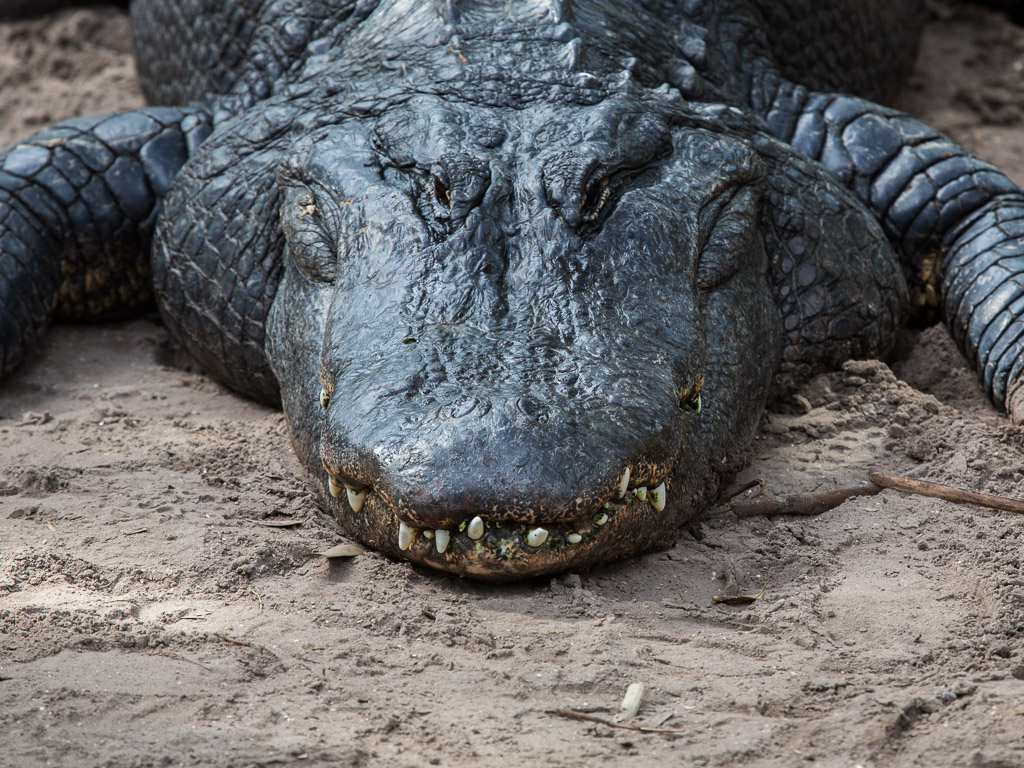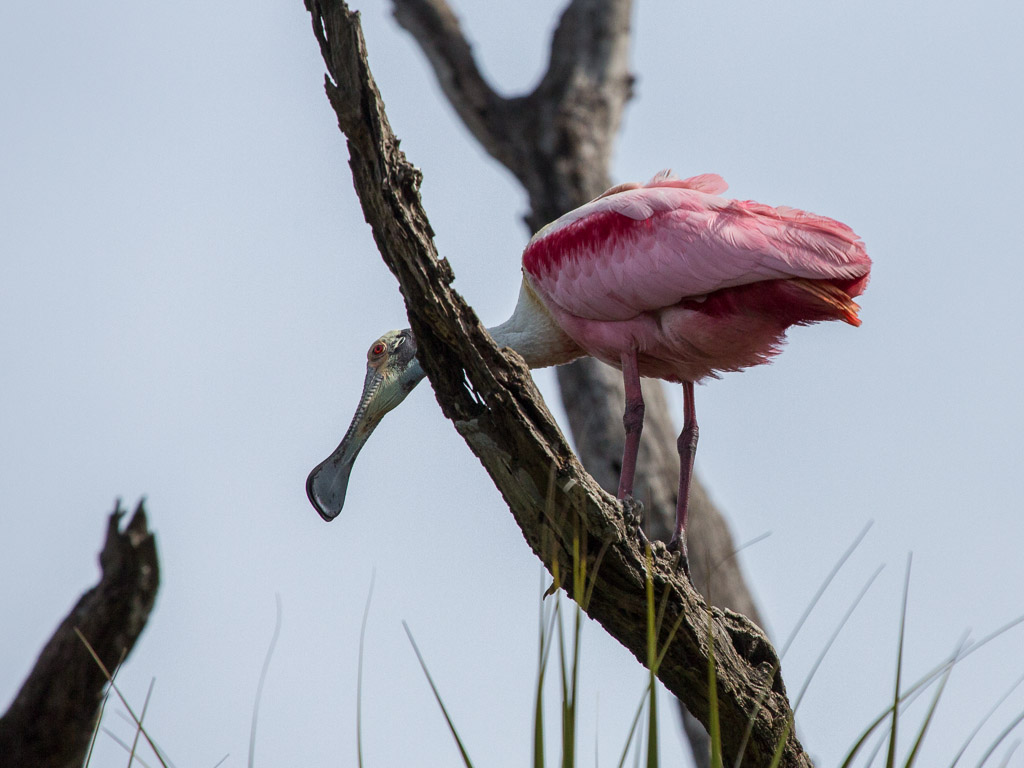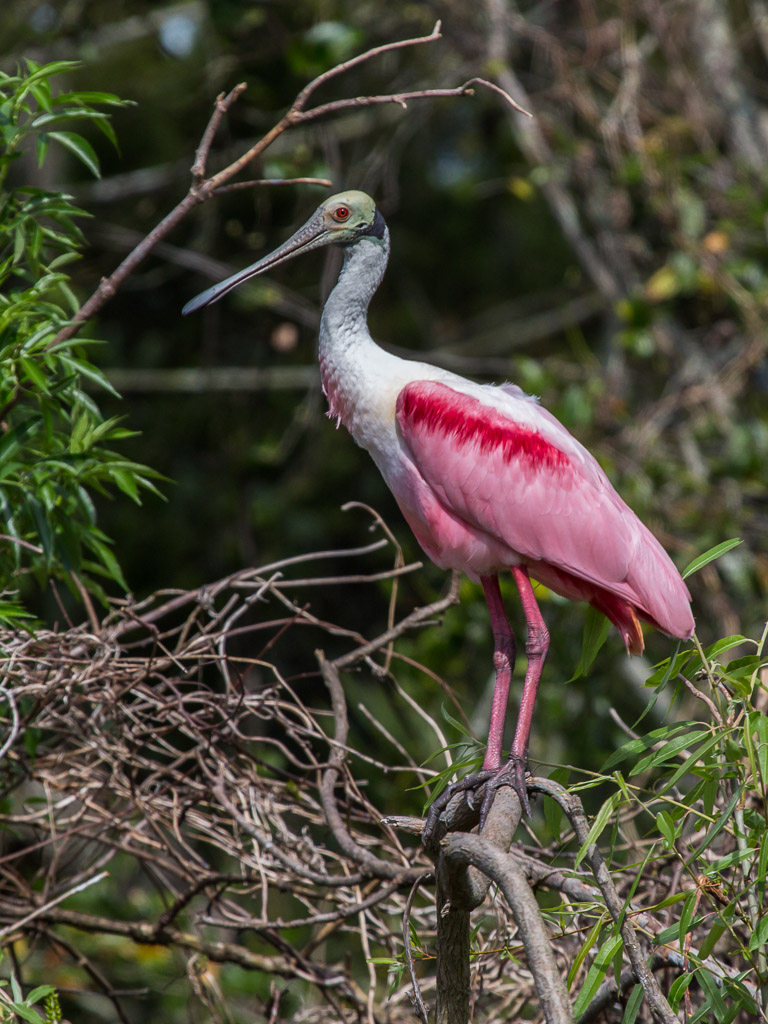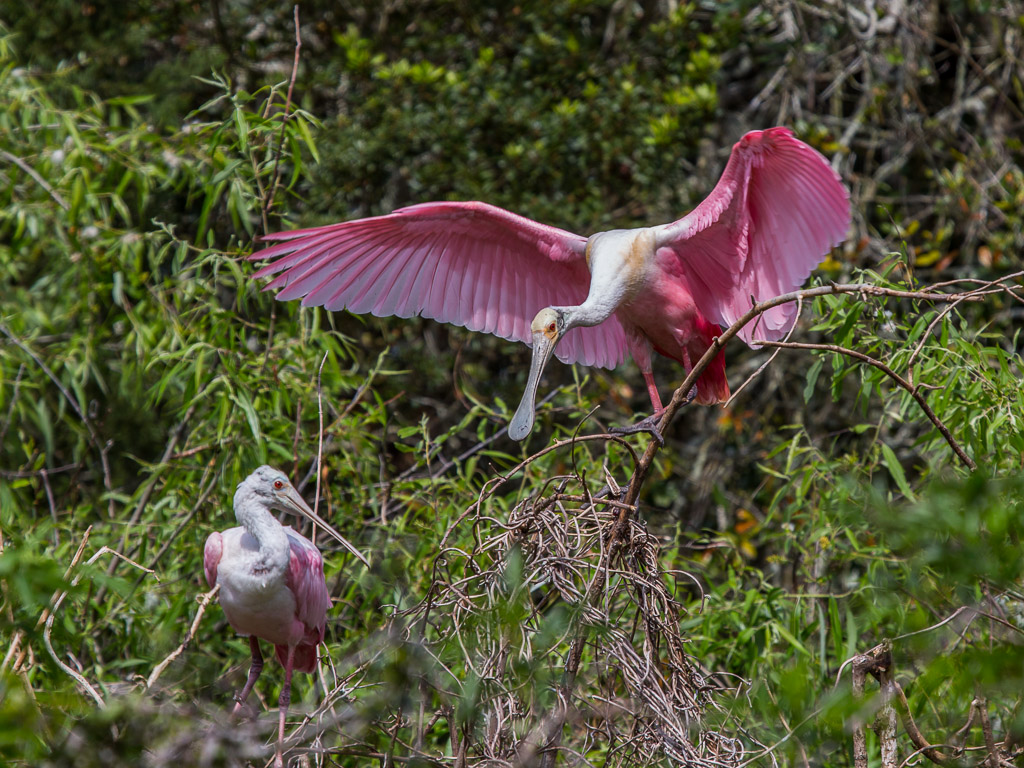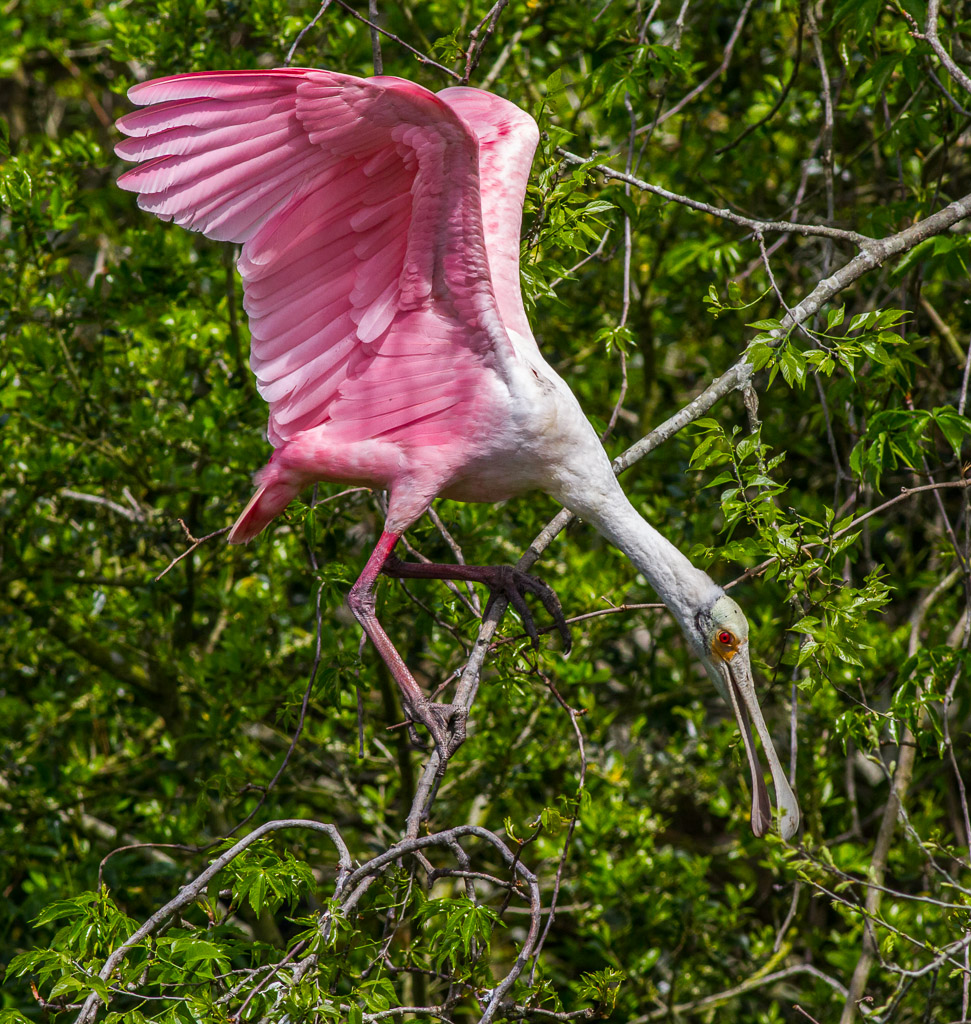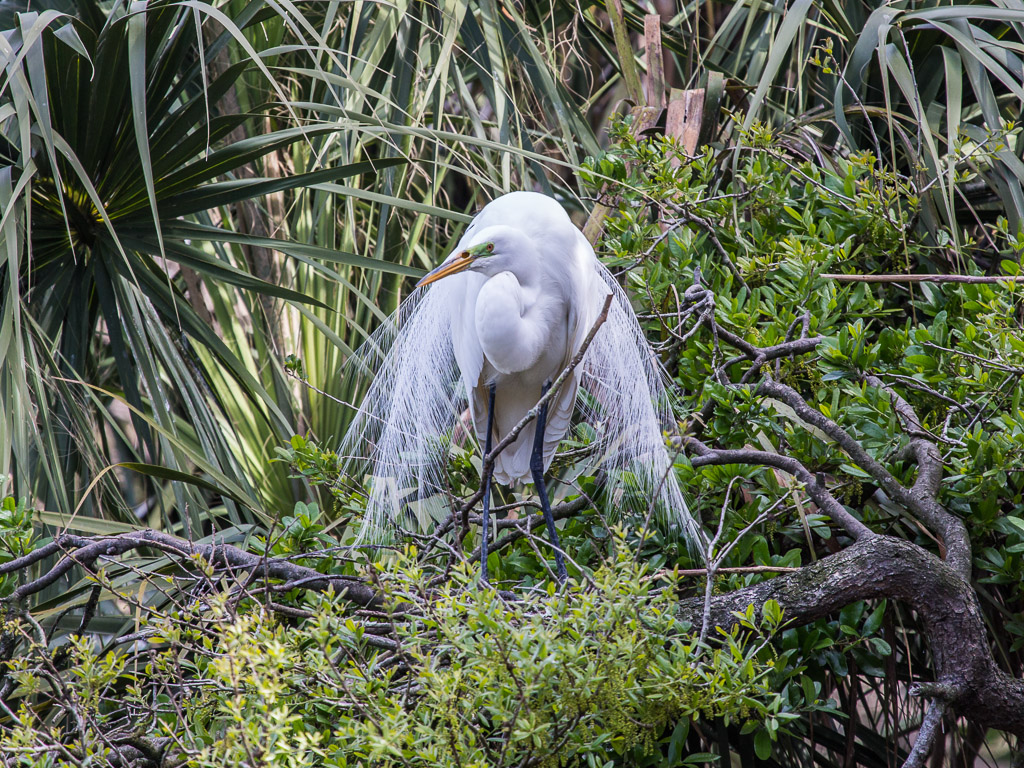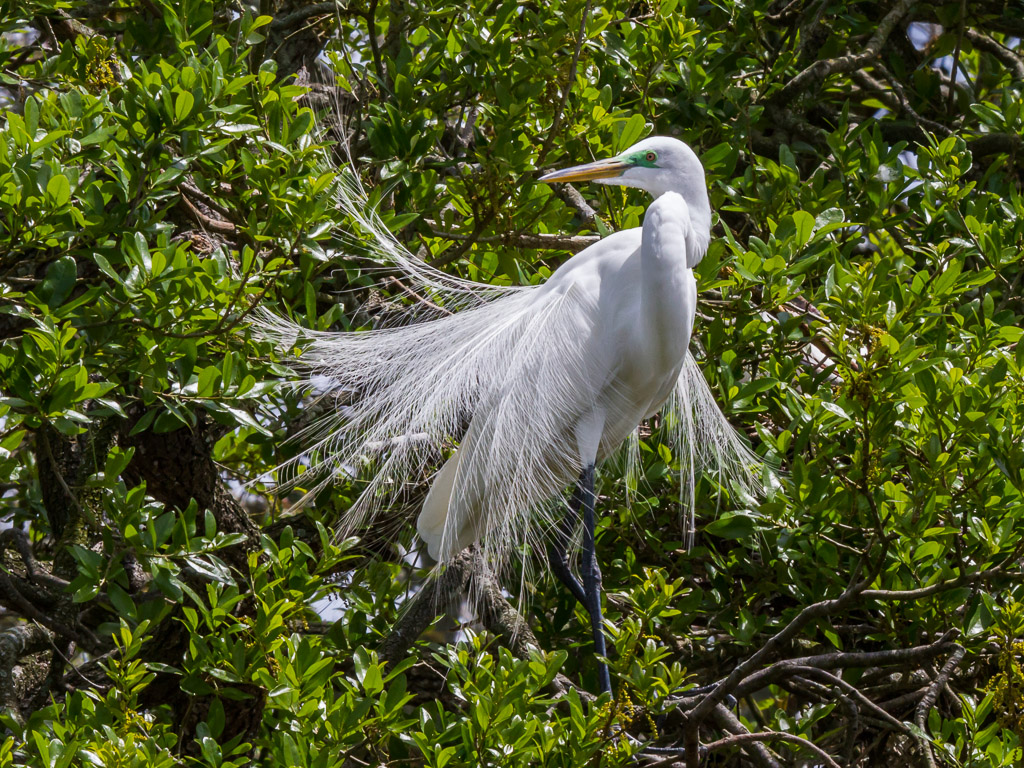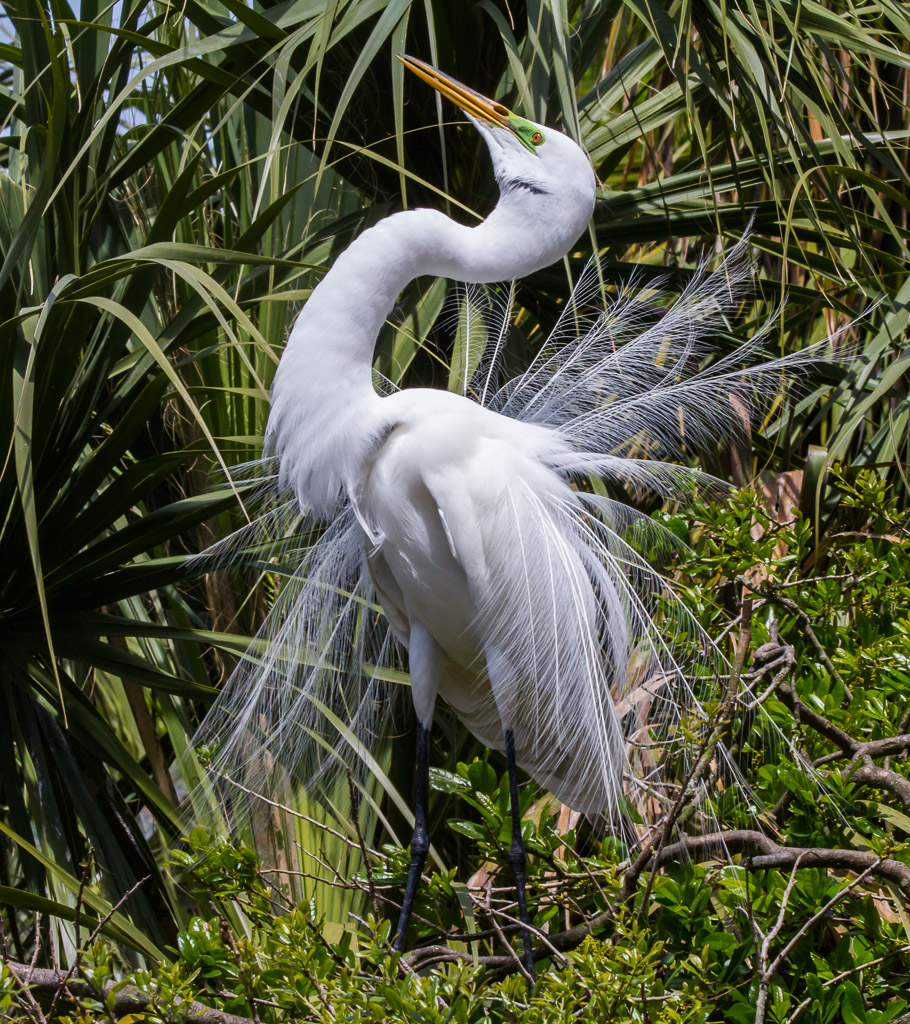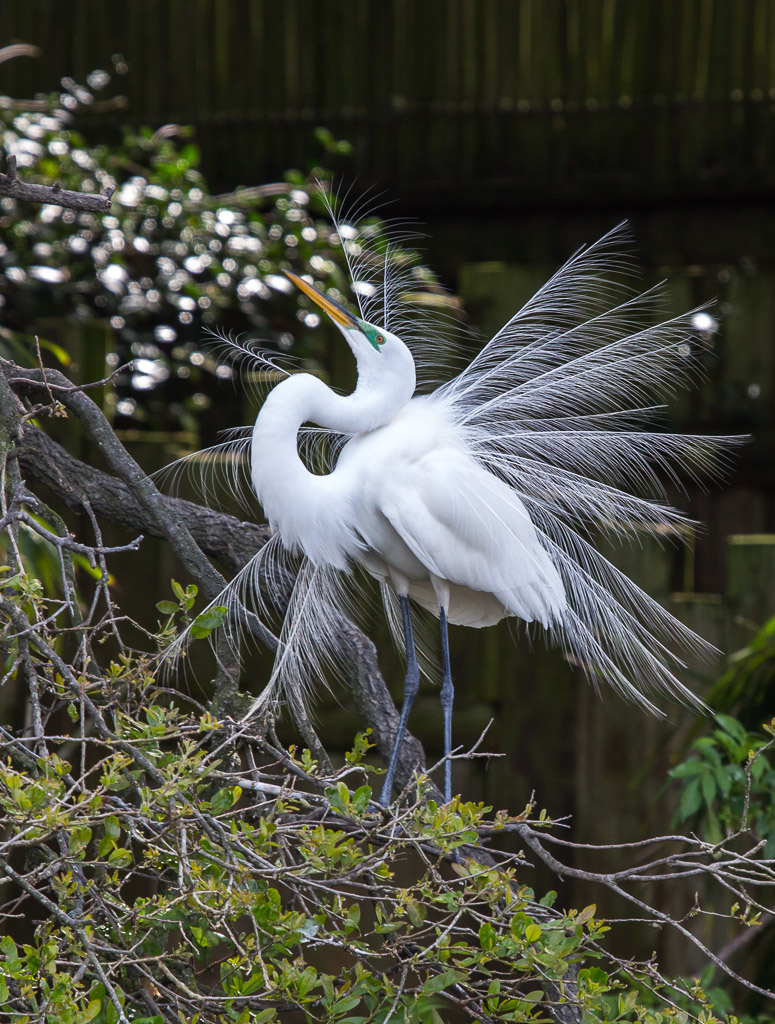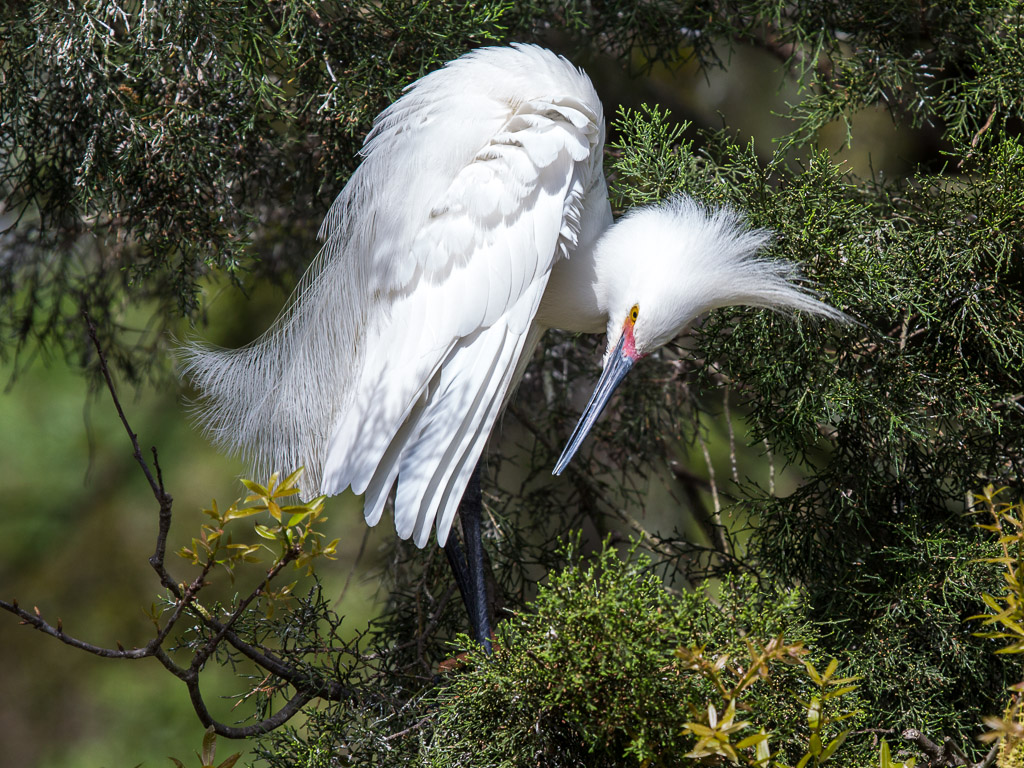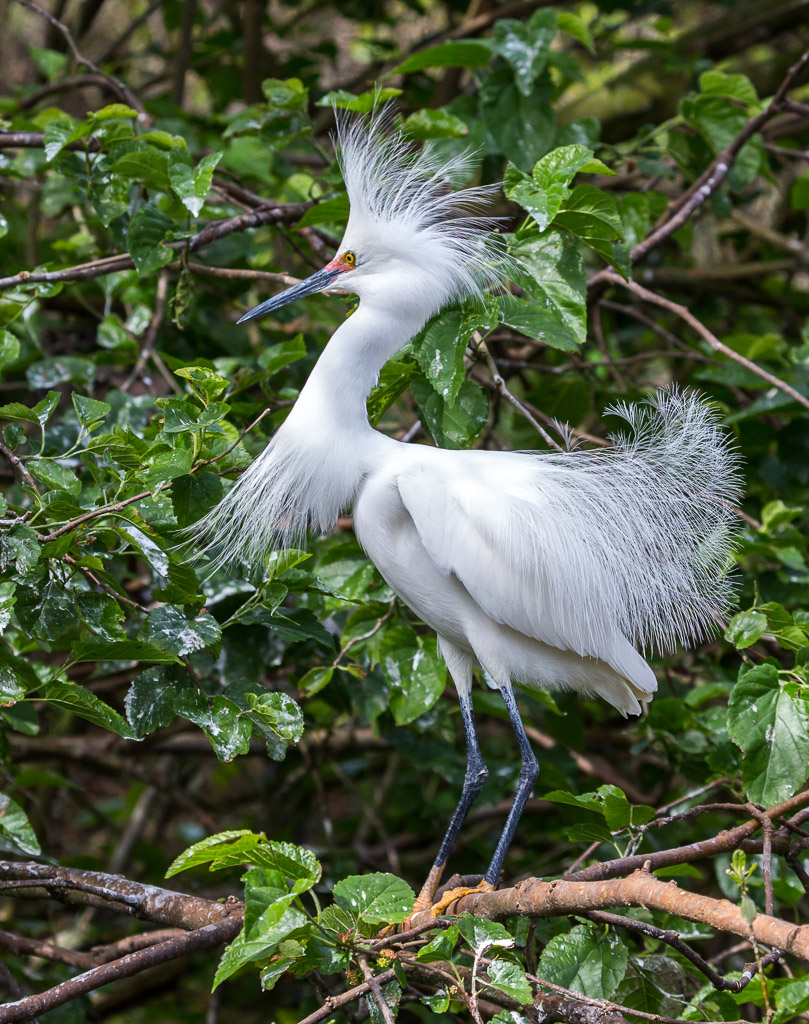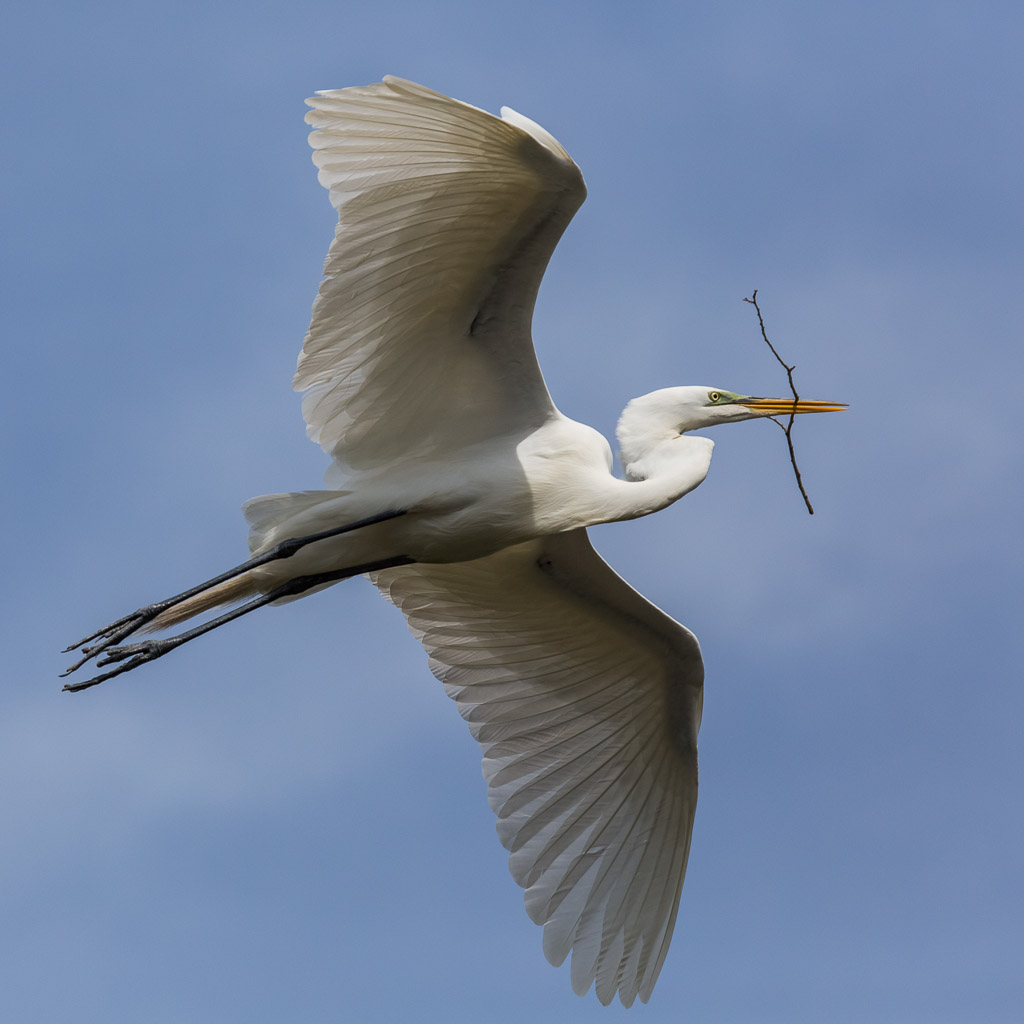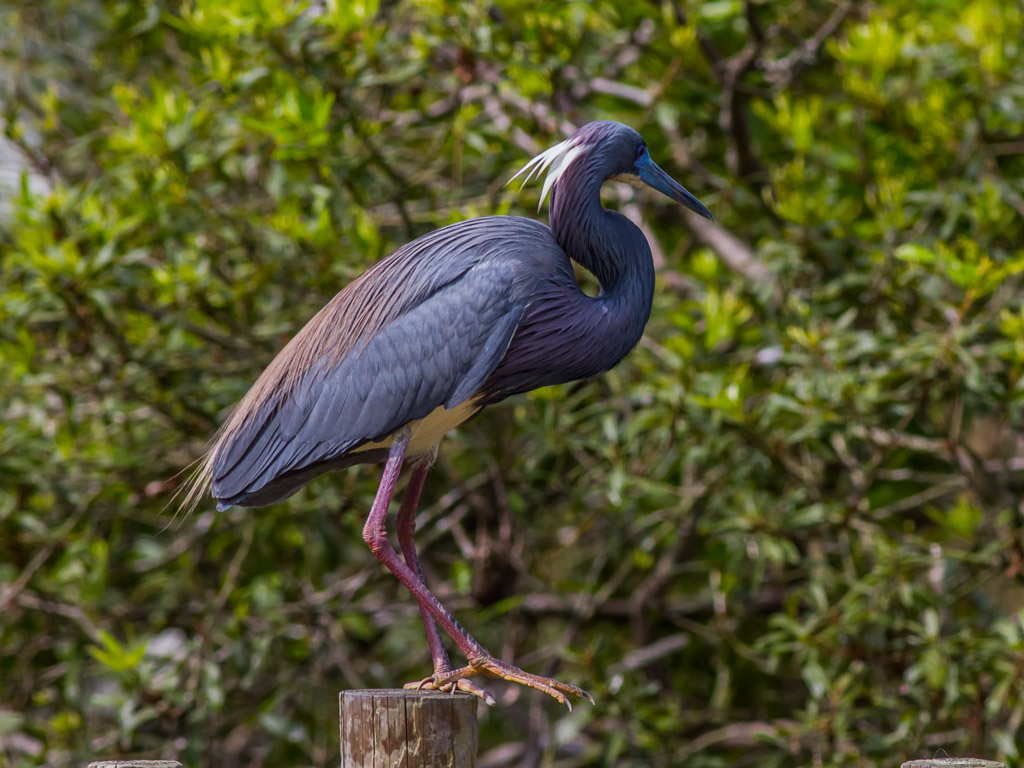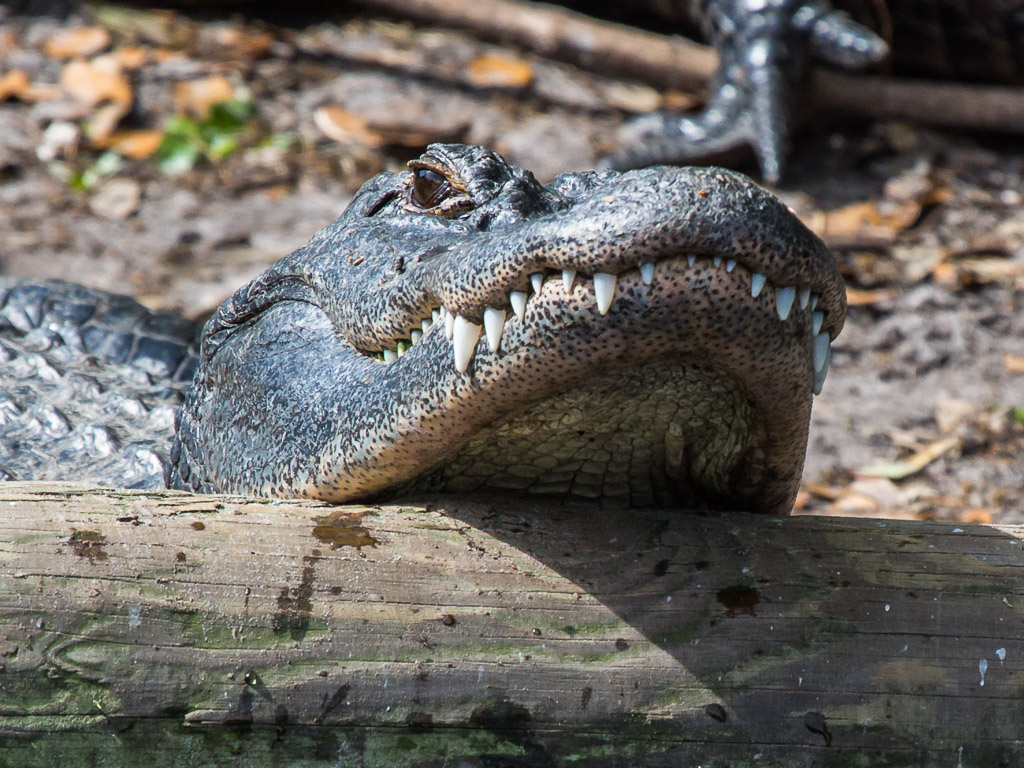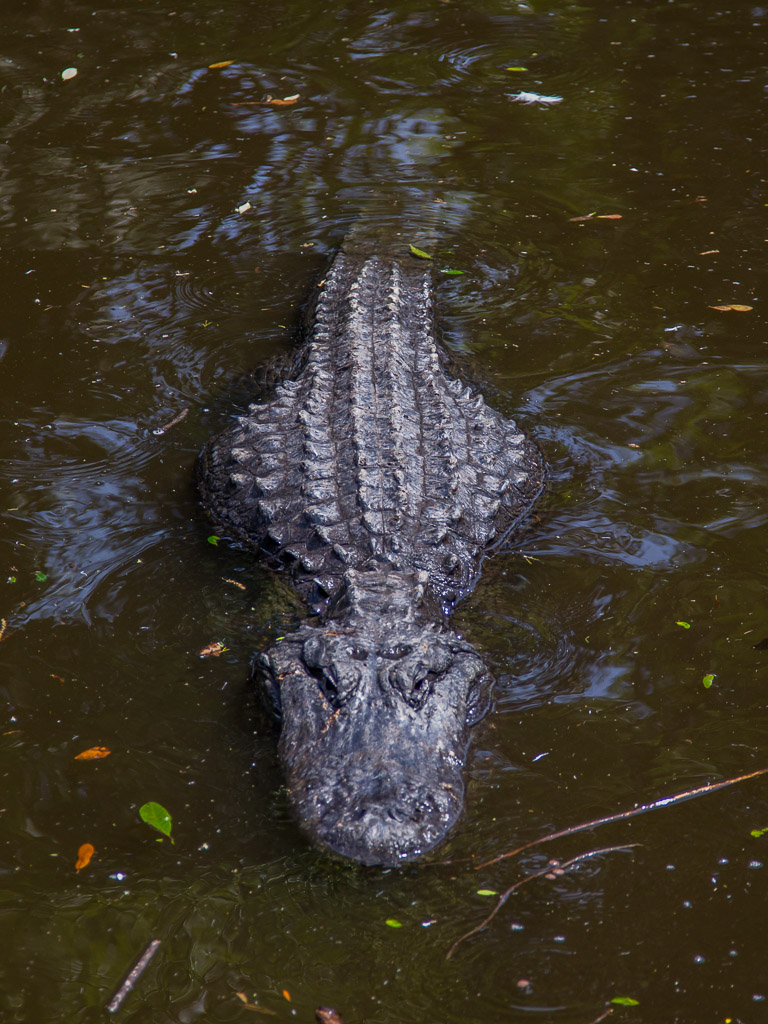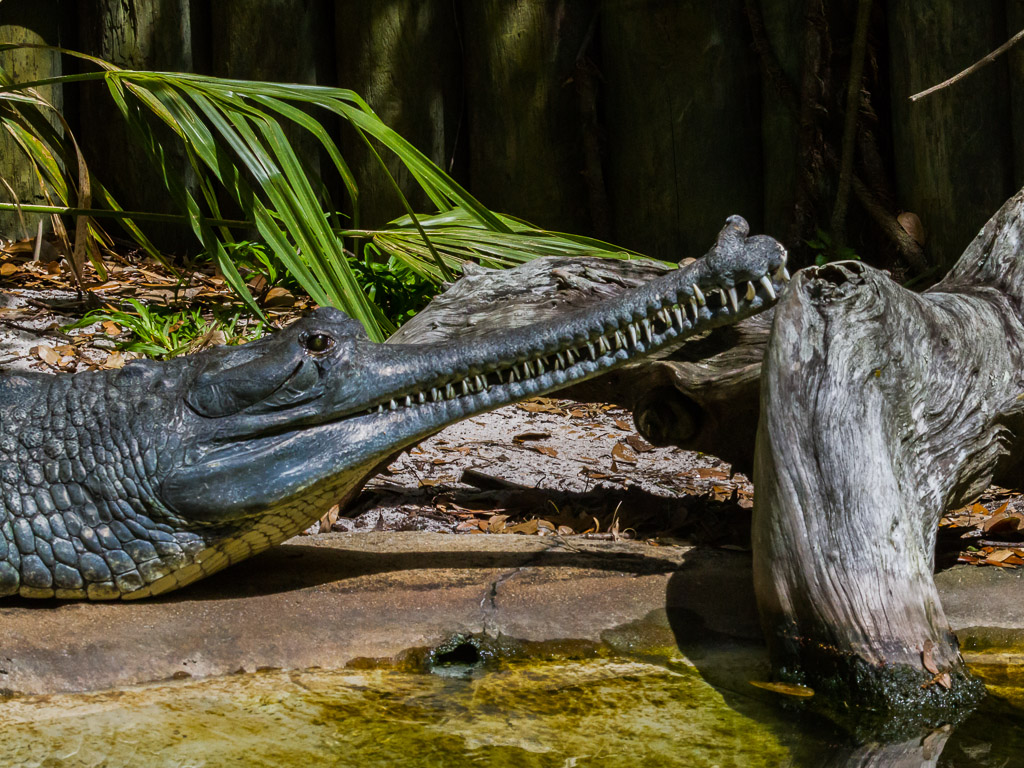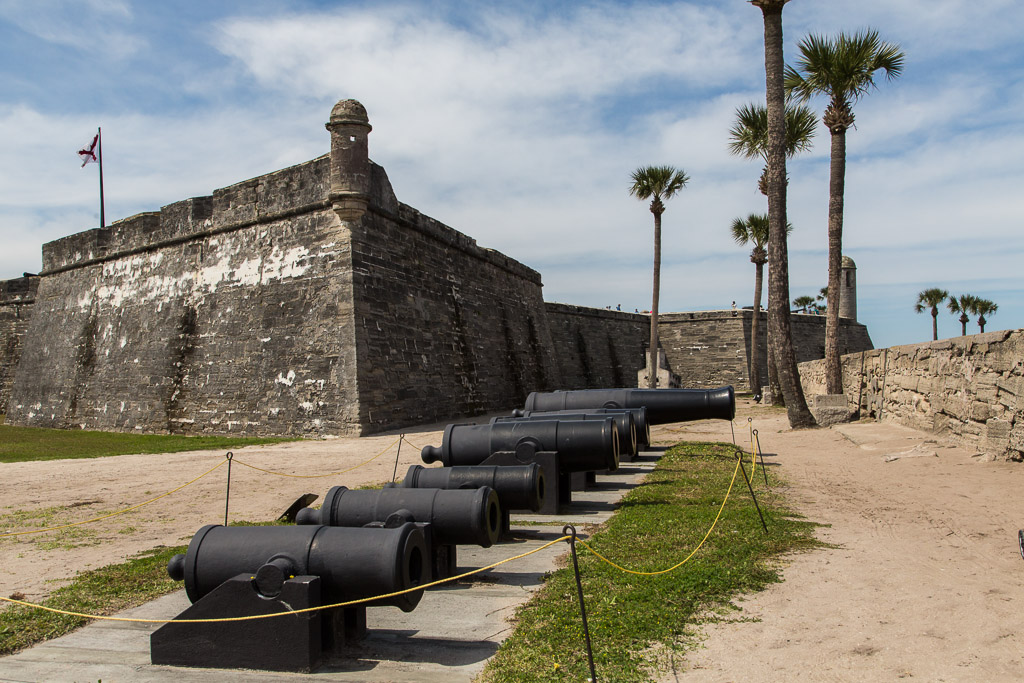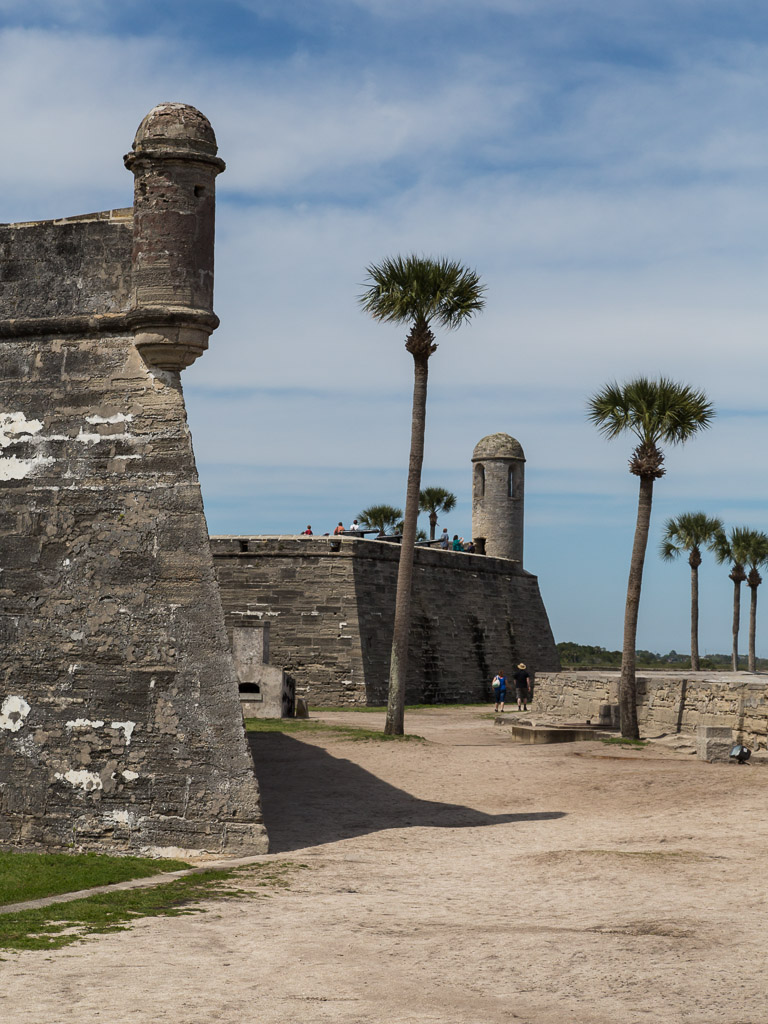From April 10th to April 14th we camped at James Island County Park near Charleston, South Carolina.
During our visit to the Charleston area we visited Fort Sumter at the entrance to Charleston Harbor. The shelling of Fort Sumter by the Confederacy is considered the beginning of the Civil War.
The fort was constructed on a shoal near the entrance to Charleston Harbor, beginning in the 1840s. At the beginning of the Civil War, Fort Sumter was uncompleted and undermanned, allowing the Confederate forces to easily capture the Fort. Originally a three story masonry fortress, heavy bombardment by Union forces later during the Civil War reduced the top two levels to rubble. In 1899 as a defense during the Spanish-American War, a large concrete gun emplacement called Battery Huger was constructed in the parade ground of the fort, and the first level was filled with earth. In 1948 Fort Sumter was decommissioned and turned over to the National Park Service.
Approaching Fort Sumter from Charleston
A view from inside the fort
While under Confederate control, there was an explosion in one of the powder magazines. The explosion killed several Confederate soldiers and blew the roof off the magazine. The magazine only held 150 pounds of powder at the time of the explosion, as compared to several thousand pounds when fully stocked! The explosion tilted the thick walled entry arch back as shown in these images.
A neat looking tugboat in Charleston Harbor
The Arthur Ravenel Jr. cable-stayed bridge over Charleston Harbor, with the aircraft carrier Yorktown in front
The fort was constructed on a shoal near the entrance to Charleston Harbor, beginning in the 1840s. At the beginning of the Civil War, Fort Sumter was uncompleted and undermanned, allowing the Confederate forces to easily capture the Fort. Originally a three story masonry fortress, heavy bombardment by Union forces later during the Civil War reduced the top two levels to rubble. In 1899 as a defense during the Spanish-American War, a large concrete gun emplacement called Battery Huger was constructed in the parade ground of the fort, and the first level was filled with earth. In 1948 Fort Sumter was decommissioned and turned over to the National Park Service.
Approaching Fort Sumter from Charleston
A view from inside the fort
While under Confederate control, there was an explosion in one of the powder magazines. The explosion killed several Confederate soldiers and blew the roof off the magazine. The magazine only held 150 pounds of powder at the time of the explosion, as compared to several thousand pounds when fully stocked! The explosion tilted the thick walled entry arch back as shown in these images.
A neat looking tugboat in Charleston Harbor
The Arthur Ravenel Jr. cable-stayed bridge over Charleston Harbor, with the aircraft carrier Yorktown in front

